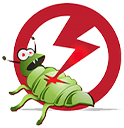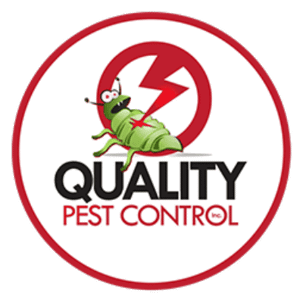In the ground outside your home, termite workers are born in utter darkness. The idea of being in the unyielding confines of the earth in pitch darkness is terrifying to most humans, but termite workers are right at home. In fact, they don't prefer to have it any other way. That's why termites in Omaha are such elusive pests. They aren't going to crawl around on your back deck like ants do. They stay hidden inside the wood. If you want to protect your property and prevent termites from making it their next meal, it is essential to know how to catch (or uncover) the warning signs of termites. You also need to understand the threat and what factors make one property more of a target than another.
Join us today as we break down everything you need to know about termite detection and prevention. If you have a termite infestation and you need a termite specialist near you, connect with us by text, email, or phone. We provide certified termite pest control in Omaha. We'll steer you toward an effective solution.
There are several kinds of termites in a termite colony. Not all of them are as elusive as the worker termites. There is one kind you may easily see on your property. They're called swarmers. A termite swarmer is a winged termite. It has a black body and white wings that look like a stretched teardrop shape when stacked on top of each other.
When swarmers are grouped together, they're hard to miss. Unfortunately, they don't group together for long. Termite swarmers are reproductives. The job of the reproductives is to mate with each other and get busy making new nests. Swarms appear in the spring and typically last less than an hour, which is why they're easy to miss. But, if a swarm comes and goes, you may still see a warning sign. Winged termites shed their wings during the mating process. If you find lots of white wings, take notice. Those wings are warning you that hidden termite nests are near.
The other kinds of termites in a termite colony are the workers, soldiers, wingless reproductives, king, and queen. All of these termites stay hidden in the ground except for the workers and soldiers. You might catch a glimpse of these when you move an object resting on the soil. But it is possible to see termite workers and not realize it. A worker termite is surprisingly small. It isn't easy to detect the subtle characteristics that define it as a termite. Imagine an insect the width of three credit cards stacked on top of each other. They don't look like much more than specks.
Termite identification is important. You need to look closely at every pale bug you find. You also need to take notice of every flying pest that lands on you. While swarmers are three times longer than workers (about ? of an inch in length), you may ignore one when you see it. After all, we have a lot of flying insects in Nebraska. It isn't uncommon to have one land on you while you're in your yard. Look for the white wings with the rounded tips, and keep in mind just how small ? of an inch is.
Along with locating and identifying termites in Omaha, you should also look and listen for other warning signs of termite activity. Here are a few of the ways to tell that termites are near:
- Tubes. These are structures created by worker termites to hide them from the light and protect them from dry conditions. A shelter tube looks like mud because it is a mixture of soil and saliva. Workers construct these tubes from the soil up surfaces to above-ground wood sources. At first, they'll look like wiggly lines about the width of a pencil.
- Damage. If you search in dark, damp zones under and around your home, you may see termite damage. Explore holes by chipping away the surface of the wood and use a flashlight to look inside. If you see tunnels on top of each other that are gritty to the touch, you've found termite damage.
- Sounds. Sometimes termites make a clicking noise inside their tunnels. The sound is caused by soldiers hitting their heads against the walls of the tunnels. It is a subtle noise, so you'll need to listen intently to hear them—unless you have a significant infestation.
When your termite consultations reveal termite activity, the next step is to evaluate the threat. It is so easy to put termite control on a back shelf if you don't know the extent of damage they can do to your property. Let's take a quick look at the facts.
Will termites damage your home in a night? Of course not. Will they damage it in a week or month? No. They damage your property over the course of years. You may already know this. If you do, you might not deal with termites quickly when you discover shelter tubes. But we don't recommend waiting to address the problem. Here are a few reasons why:
- Termite workers travel long distances to acquire food. When you find evidence of termites, you have no idea how many colonies are attacking your property at the same time. Keep in mind that a termite nest produces many swarmers, and each couple (the queen and the king) attempts to make a nest. You can have dozens of nests around your property, and they can feed on your home at the same time.
- An eastern subterranean termite colony can have hundreds of thousands of individual termites. If multiple colonies attack your home, they can do a lot of damage in a much shorter time than one colony will do.
- Termites don't sleep. They can feed on your property continually, even during the winter, if conditions are right.
- Termites don't focus on a single food source. Workers eat many food sources at the same time. They can target several points in your home as they also feed on wood sources in your yard.
- When termites find abundant food, their colony grows in response. For example, a large pile of wood debris will make a termite colony grow quickly.
When you put termite control on the back shelf, termites may do more damage than you think they will. It depends on the factors present. You should have a licensed professional perform a consultation and evaluate the conditions at the very least. Your service specialist will alert you to any conducive conditions that could make termites damage your property faster.
When termites are in your yard, are they going to invade your home? Is it a foregone conclusion? Not necessarily. But you should know how likely it is and what factors can increase the chances of an infestation.
- Termites enter homes through cracks in foundations. If you have obvious cracks, you may conclude that termites are finding cracks below the surface and are able to enter your home secretly.
- Termites are attracted to rotting wood. Inspect your exterior and consider all areas of rotted wood. The more rotted wood you have on your home, the greater the risk of termite damage to wood that isn't rotted will become.
- Homes that have wood-to-ground contact are more susceptible to termite damage. When wood touches the soil or is buried in the soil, termites can enter without creating mud tubes. Once inside, they can go in and out freely.
- A yard that has lots of food options for termites is more likely to have an indoor infestation. The closer the wood sources are to the exterior of the home, the greater the threat. Consider old fences, barns, and sheds. Consider stumps, logs, and firewood. Consider wood left on the ground after a construction project or the removal of a tree.
Every home is a bit different. Use these insights to consider how termites may present a threat to your property. If you need help with evaluating termite conditions, contact Quality Pest Control for pest control assistance in Omaha.
We've talked a lot about termite detection and prevention, but what is the best way to get rid of termites and proactively prevent termite damage if termites haven't invaded yet? In both cases, the answer is The Sentricon® System with Always Active™. Sentricon® is an award-winning, professional-grade termite bait system. When installed by a Certified Sentricon® Installer, your home is protected in three ways:
- Sentricon® actively works to eliminate a current infestation. As we pointed out, termite workers feed on multiple food sources. That means they're going to find the Sentricon® bait. When they do, they will share the active ingredient with each other, and the colony will be eliminated.
- Sentricon® actively prevents future infestations. When new colonies send workers to invade your yard, the Sentricon® System continually offers a desirable food source. Taking the bait leads to colony elimination.
- Sentricon® offers ongoing termite surveillance. When termites try to make a meal out of your home, you'll know it.
There is no better way to guard your property investment against the threat of termites in Omaha. It is easy to get started. Connect with us today, and we'll guide you through the process. Termite damage is preventable. Rest easy with home pest control services from Quality Pest Control to help eliminate termites.
Call Today!
(402) 534-1364
Quality Pest Control


